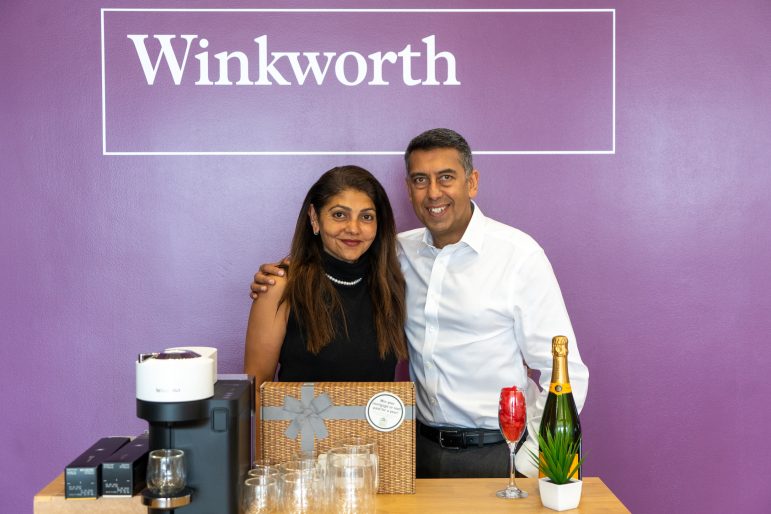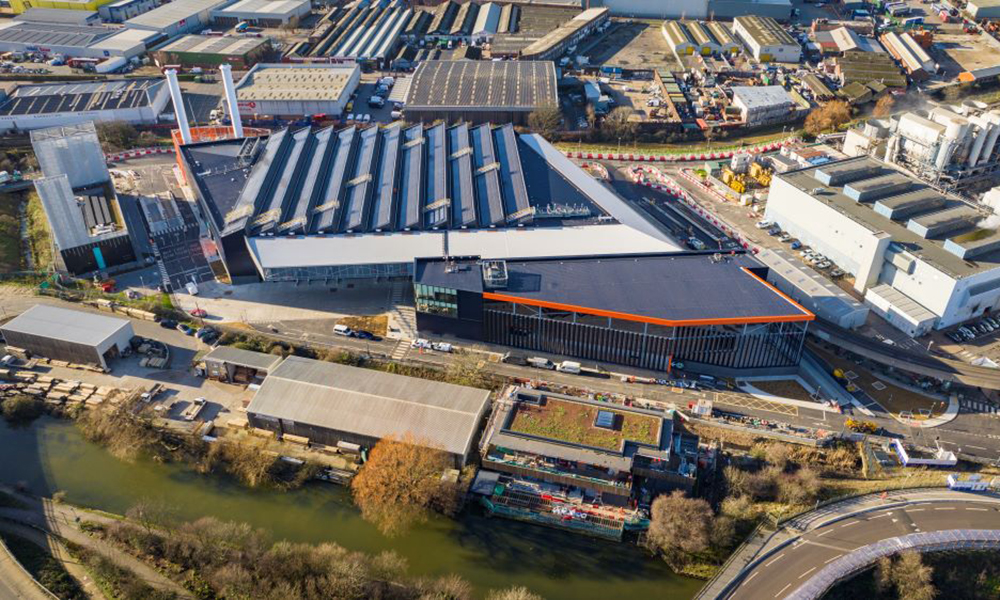
London restaurants have suffered their weakest growth in the last 30 years, and perhaps been in a period of contraction.
That’s the conclusion of the 30th edition of Harden’s London Restaurants – the 2022 publication – and its associated restaurant-finder app, which go on sale next week.
The guide’s analysis is based on two years of averaged data, because COVID-19 prevented the publication of its 2021 edition, causing the guide to skip a year.
By averaging two years of data, the results potentially understate the severity of the restaurant market’s low point, as it spreads the effect of closures evenly over the two-year period. But – in showing two years of identical data – the data series emphasises the prolonged nature of the downturn
Openings and Closures
The guide records a rate of 149 newcomers added per year over the period. This is in the middle of the range of 107–200 added per year in the previous 10 years.
Closures, however, were at a rate of 125 per year over the two-year period. This level is worse than 2018’s former high of 117 closures, and the former spike of 113 in 2003 (a year badly hit by the SARS epidemic).
Net openings
Net openings (that is Openings minus Closures) were at a rate of 22 per year: comparable with the lowest levels seen over the 30-year period (cf the early nineties, and 2003).
Such weak figures are more dramatic in the current period: firstly, because they are relative to a much larger market than in former weak years; and secondly because they represent a two-year period, whereas historically individual weak years have been downward spikes followed by immediate strong growth.
Viewing these figures on the graph of London Net Openings – which carries a pronounced hump between 2014 and 2018 – raises a question as to whether the four-year period of record growth in the middle of the decade 2010-2020 was fundamentally unsustainable even without the pandemic.
Churn
The dramatic nature of the COVID-19 induced downturn is most evident in the statistics on churn.
At 1.18 for two years, not only is this ratio the lowest recorded, but it dramatizes the unprecedented severity of the COVID-19 years, compared with prior downturns where an increase in churn has quickly been reversed in each case.
image
The guide’s co-founder, Peter Harden, said:
“Even before March 2020, over-supply was a problem in the London restaurant market, and the pandemic meant there was absolutely nowhere to hide.
The result has been the most dramatic period of closures and churn that we have yet seen.
Recessions normally hit weaker performers. In the closures we record, the fall-out is more randomly spread, with many excellent businesses shuttering due to factors as diverse as a City-based location, recalcitrant landlords, or a decision to take retirement and bow out gracefully.
And all the above is before we start to factor in the new normal of the dire staff shortages created by Brexit.”
The new guide records a large number of high profile closures, many associated with celebrity names over the two-year period. These include include: Alyn Williams (although the circumstances were singular); The Bleeding Heart Restaurant (though tavern and brasserie continue to operate); Bryn Williams at Somerset House; The Dairy; The Frog Hoxton (relocated); Galvin HOP (reformatted) and Galvin at the Athenaeum; The Gilbert Scott (to be relaunched in new ownership); The Greenhouse; Hai Cenato; Hix, and Hix Oyster & Chop House; Kym’s by Andrew Wong; Merchants Tavern; Rochelle Canteen at the ICA; Roux at Parliament Square; The Square; and Texture.
Above inflation price increases and the rise of the £200 plus restaurant
The average price of dinner for one at establishments listed in this guide is £64.14 (c.f. £59.28 two years previously). Prices have risen by an annualised rate of 4.0% in the past two years. This rate remains above the general annual inflation rate of 3.2% for the 12 months to August 2021.
The rise is most marked amongst pricey restaurants (over £100 per head). In this group, the annualised growth is a significant 8.8%.
There has also been a marked change in restaurants for which the guide’s formula price is over £200 per head. Whereas in the 2020 edition, only one restaurant (The Araki) had a formula price above £200 per head, in the 2022 edition, there are seven: Alain Ducasse at The Dorchester; The Araki; Endo at Rotunda; Ikoyi; Kitchen Table; Mãos; and Sketch (Lecture Room).
And the number of restaurants with a formula price over £150 per head has risen from 9 to 24.
This formula price assumes a bottle of house wine spread between two, and thus represents the minimum one could sensibly spend in a luxury restaurant.
The rise of Japan and Africa
After new Modern British (66) openings, Japanese cuisine was the most popular for newcomers this edition, accounting for 23 of the debuts (just beating Italian cuisine which was the designation for 22).
Having been a rarity in early editions of the guide, the guide suggests that Japanese dishes are becoming fully integrated into UK food culture
The introduction further suggests that African and Afro-Caribbean cuisine as a category is breaking through into the luxury restaurant sector for the first time.
Peter Harden comments:
“For decades, African or Caribbean restaurants have flown under the radar as far as the general foodie press was concerned. They served their communities and locals but lacked any central London address and/or PR profile. But the arrival of new restaurants like Akoko, Antillean, Chuku’s, Chishuru and Tatale – to join the likes of Ikoyi and Stork – represent a striking break from the past.
Firstly, the press and foodie world are much more interested.
Secondly, with a number of these restaurants charging over £75 per head – over £200 per head in one case – with swanky St James’s or Mayfair addresses, the trend could be like the ‘nouvelle Indian’ revolution of the late ’90s, It feels like once again London may be at the forefront of a vogue to take a family of cuisines mostly celebrated for their ‘humble homespun qualities’ (to quote The Evening Standard’s Jimi Famurewa) and reposition their flavour palette in combination with local ingredients and other culinary inspirations as the basis for luxury openings globally.”
East London loses some momentum
Central London asserted its traditional dominance as the location for most newcomers, accounting for 102 arrivals. In the ‘burbs, East London confidently led the way (with 60 openings). Trailing behind came South London (with 49) and West London (46). As usual, North London took the bottom slot (with just 35 newcomers).
Both East and West London celebrate culinary champions
Ratings and reviews in the newly released guide and app are based on one of the UK’s most detailed annual polls of restaurant-goers, with some 3,000 people contributing 30,000 reports for the 2022 edition.
Stand-out performances include the following:
• Core by Clare Smyth in West London maintained its position as topping votes in the poll for Top Gastronomic Experience of the Year; and it also became the most commented-on restaurant in the survey. This latter is seldom achieved by such an expensive restaurant. Diners say this “world-class Notting Hill luminary offers a supreme gastronomic experience. From the moment you walk in to the moment you leave, everything is perfect, but despite being in the top echelons of restauration, everyone is so friendly and unstuffy and “Clare and head chef Jonny Bone always make time to say ‘hi’ from the kitchen doorway. Cooking shows unsurpassed levels of sophistication, technical expertise, and the sheer culinary pleasure of the majestic tasting menu. Dishes are consistently bursting with flavour (I have never been so excited by a potato dish!) and look like works of art; while vegetarians and pescatarians are clearly no afterthought. After two cancellations for Covid restrictions I finally made it… well worth the money!.
• Chef Richard Cagali at Da Terra scored the survey’s highest food mark, with the guide acclaiming his “take on Brazilian food with a fresh and fine-dining perspective that’s absolutely sublime… the worthy successor on this site in Bethnal Green’s old Town Hall that’s also housed The Typing Room and Viajante. What other Michelin place allows you to add your own chillies to a fish curry so you spice it to your liking? Bread is a course in its own right: a large lump of roasted bone marrow with three different butters that you could just live off and be happy. A short but interesting beer list means you can keep costs down if you don’t fancy wine”.
• Achievement of a sort: Ruth Rogers’s River Café – yet again voted London’s most overpriced restaurant. The results of the survey note “despite all the positives, many diners just can’t stomach a bill that can seem terrifying, or even plain ludicrous. Hence, for the umpteenth year, it’s voted London’s most overpriced restaurant by the sizeable minority who feel it may be absolutely exceptional every time, but on occasion, you do think they’re just taking the piss.
https://london-post.co.uk/pandemic-causes-record-closures-and-churn-amongst-london-restaurants/





